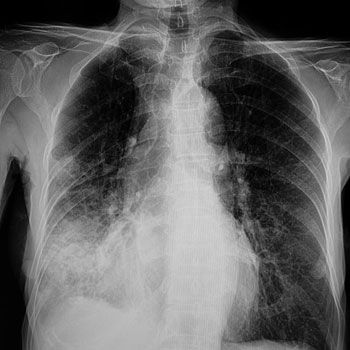Two tips for the physical exam
James O’Keefe, MD, FACP, explains why blood pressure should be checked in both arms and why clinicians should routinely measure patients' waist circumference.
There are many physical exam pearls for specific situations, but only a few apply to the prevention visit. For well patients, these are the ones I'd teach. They involve aspects of the physical exam that you can use repeatedly throughout the day and might catch some patients you'd otherwise miss.
First, with finding and treating hypertension at the core of what we do, it's important to check blood pressure in both arms. This is part of the American Heart Association guidelines, but not often done. In patients with hypertension, more than 10% will have a substantial difference of more than 10 mm Hg in readings taken between the arms. You want to know which arm has the higher reading and if the finding is consistent. If it is, then that's the arm that you and the patient should be using for monitoring and treatment.
I don't have equipment for simultaneous measurement of both arms, so I like to go back with a recheck if there is a discrepancy. If you measure the first arm and it is elevated, and then measure the second arm immediately [after] and the pressure is lower, you should remeasure the first arm. It's possible that the patient may have acclimatized to the situation. If it remains elevated, then this is the arm to count for the measurement. This takes extra care and time, but in many patients this may lead to a completely different hypertension classification and even treatment plan.
A second pearl is to build the habit of measuring waist circumference. If you and your team do it routinely, it can provide you with perhaps the most important vital sign. A waist circumference threshold of 35 inches for women and 40 inches for men is part of the definition of the metabolic syndrome, although the generalizability of these thresholds is uncertain and may vary by ethnicity.
I remember a gentleman I had seen for five years, and I had done his exam in his regular clothes. He was rather young, seemed healthy, and was a very active individual. One year, I did some periodic blood screening for him and was surprised to find all the markers of metabolic syndrome. So at the next visit, I put a tape measure around his waist, and I was surprised. He had a larger waist circumference than I had anticipated, just under the 40-inch mark. I had not anticipated this based on his appearance. Had I measured this in the years prior, I may have been able to give him a little forewarning that he was at risk for metabolic syndrome.
It's a simple measure, but it has to be done correctly. To measure the waist circumference, find the iliac crest, and then put the tape measure just above the iliac crest on their side and ask them to hold it in place. Then you walk around them or ask them to turn slowly and hold the second bit of the tape measure over the first—without pulling it snug on the skin, just tight enough that it's not pressing in on the skin. That's when you ask them to breathe in and exhale. At the end of the exhalation would be the point at which you determine their waist circumference. Measuring with consistent technique allows you to trend this more accurately across visits.
Patients often ask, “What weight should I be, Doctor?” I've had people do incredible lifestyle interventions in terms of exercise and diet and come in frustrated that their weight hasn't changed. This is one of those metrics that you can show them and say, “Look, you've made a lot of progress. Actually, your waist circumference has come down.” We could do blood testing to show that their cholesterol or liver enzymes or glucose has improved, but if people are looking for something that they can watch themselves, or that you can quickly check for them at a visit, this is a very helpful marker.





